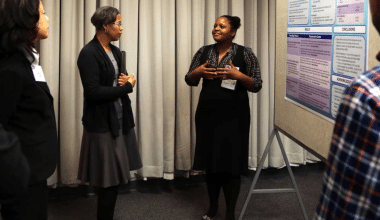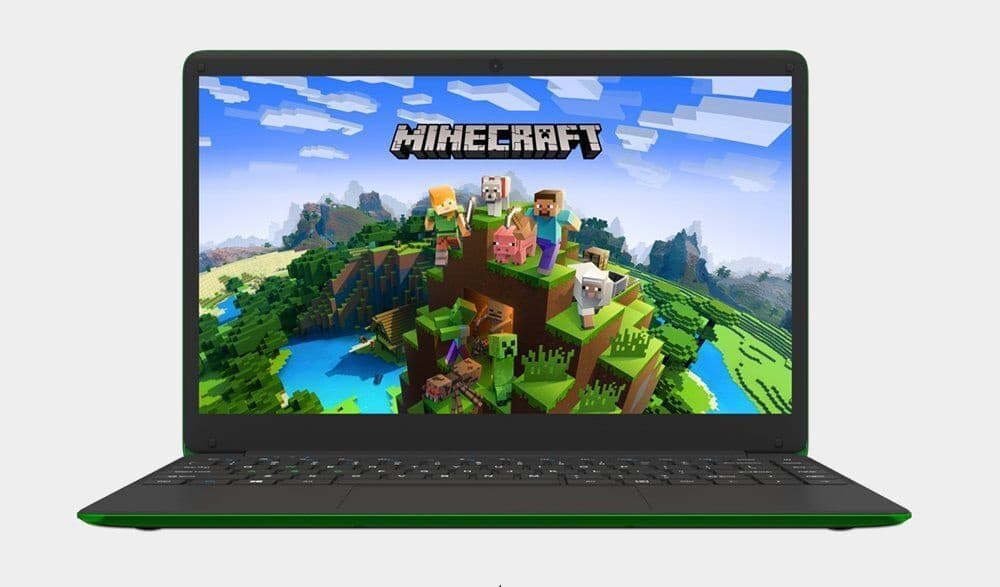The race for the election made prompted Ex-President Donald Trump to make a few student loan forgiveness changes himself as he brought several more proposals to the table.
The Trump administration set up what they perceive to be a clear plan to eliminate student loan anxiety. These student loan proposals will affect but undergraduate and graduate students alike studying in the US.
If you follow the headlines, there have been multiple twists and turns this year regarding student loans. Billionaires have paid off people’s student loans. Student loan scams have become rampant. Student loan forgiveness programs have faltered a great deal.
With legislative proposals, major lawsuits, and the Trump presidential campaign rhetoric, there may be major student loan changes in the coming year.
So, in this article, we will do a full review of these Trump student loan forgiveness changes and proposals and the way forward for loan debtors.
What is Student Loan Forgiveness?
Student loan forgiveness simply has to do with leaving the amount left on the student loan of people who undertake qualified jobs, such as teaching in a high-need area who has repaid the loan for a specific length of time.
Loan discharge is rare but can be granted to borrowers who can’t repay the loan for a variety of reasons such as death, disability, fraud, identity theft, and in very scarce circumstances, bankruptcy or closure of the school where the loan was taken.
What is The Difference Between A Change And Proposal?
Before we go into details on what these Trump student loan forgiveness proposals and changes are, you must understand the difference between the words “change” and “proposal”.
The “changes” made are proposals that have been passed into law. So, there were student loan forgiveness changes that the Trump administration already passed in 2017.
Also, Trump’s budget proposes even bigger changes — including the consolidation of income-driven repayment plans and the elimination of Public Service Loan Forgiveness.
However, “Proposals” are merely what they are–Proposals. They have not been passed into law.
In essence, this guide covers all the student loan forgiveness changes that Trump has already made and potential changes.
What Are The Changes To Student Loan Forgiveness Under Trump?
According to Congress Gov, the Trump administration passed its Tax Cuts and Jobs Act in 2017, which included two student loan-related changes.
Total Death and Disability Discharge no longer Taxable
This change simply means that when borrowers with federal student loans are permanently disabled, they can receive student loan forgiveness through the Total and Permanent Disability Discharge (TPD) program.
Read also: How To Get Rid of Student Loans During The COVID Period
According to Student Aid, a total and permanent disability (TPD) discharge relieves you from having to repay a William D. Ford Federal Direct Loan (Direct Loan) Program loan, a Federal Family Education Loan (FFEL) Program loan, and/or a Federal Perkins Loan or to complete a TEACH Grant service obligation.
To qualify for a TPD discharge, you must complete and submit a TPD discharge application, along with documentation showing that you meet our requirements for being considered totally and permanently disabled, to Nelnet, the servicer that assists the U.S. Department of Education with the TPD discharge process.
Previously, student loan forgiveness through this program was treated as taxable income. But the Tax Cuts and Jobs Act changed that.
This is good news for disabled borrowers. For instance, you received $100,000 of forgiveness through TPD. Even if you were only in the 12% tax bracket, that would generate at least a $12,000 tax bill.
To generate that amount of money would be tough at any time but especially when you aren’t able to work. This simply wasn’t fair, and it’s great that the rule has been changed.
Another point to note, though, is that the law isn’t retroactive. This simply means that only loans forgiven on or after Jan. 1, 2018 qualify.
Furthermore, this provision is set to expire in 2024 unless Congress renews it.
Tuition and Fees Deduction no longer available
The Tax Cuts and Jobs Act, in 2017, also eliminated the Tuition and Fees Deduction. Before it expired, you could use this deduction to cover certain school expenses. Enrollment fees, tuition, course books, and lab fees were a few examples of qualifying expenses.
It’s sad that this deduction is no longer available. However, there are income limits to these education tax credits, so the tuition and fees deduction was mostly taken advantage of by high earner taxpayers.
On the bright side, several other popular student loan tax programs remain unchanged.
For instance, The American opportunity tax credit, Lifetime Learning Credit and student loan interest tax deduction (for now) are still available under the current tax code.
What Are Trump Student Loan Forgiveness Proposals 2024?
There have been a lot of student loan forgiveness proposals that warrant the raise of an eyebrow about the Trump administration.
However, as we stated earlier, it’s important to note that none of these proposals are the law. But, that also doesn’t mean they are not changes that the President wants to see.
As an international student, whether you’re for or against these changes, you need to know what these Trump student loan forgiveness proposals are and what they could mean.
Elimination Of Public Service Loan Forgiveness (PSLF)
President Trump, along with Betsy DeVos, has called for the elimination of Public Service Loan Forgiveness (PSLF) on several occasions. PSLF is one of the top ways to get student loan forgiveness in the United States.
In his first budget proposal for 2018, he attempted to defund PSLF. This raised a series of legal questions (because whether there is money or not, it’s still the law, so what would the Department of Education do), and eventually, the proposal was dropped.
Read Also: Student Loan Forgiveness Scams
However, Trump has once again proposed eliminating Public Service Loan Forgiveness in 2024.
This could adversely impact public servants, including members of the U.S. Armed Forces, police officers, firefighters, first responders, prosecutors, public defenders, and others.
It is bad because you will have fewer people pursuing work in public service, government, law enforcement, teaching, and more.
Given many of these fields require a degree, it could be difficult for highly qualified people to get a degree and then work in these lower-income fields that are valuable to the United States.
Importantly, the proposal would impact future borrowers, not existing borrowers who already work in public service and are currently paying off student loans.
Why Cancel Public Service Student Loan Forgiveness?
The president and Education Secretary Betsy DeVos have stated that they want to balance the needs of both student loan borrowers and federal taxpayers.
Eliminating this program, they argue, would save the federal government money from not having to forgive potentially billions of dollars of federal student loans.
Others even believe that the program is vital to attract and retain individuals to enter public service and non-profit jobs, many of which pay lower salaries than private-sector roles.
Elimination Of Subsidized Student Loans
Trump has also proposed the elimination of subsidized student loans in his 2024 budget proposal. Subsidized student loans provide student loan borrowers with significant assistance – with the government paying for interest accrued during school. This can result in significant savings for borrowers.
The government issued 5.7 million subsidized student loans in the 2016-2017 school year. These loans go towards students with a financial need, based on filling out the FAFSA.
This is not good news because to qualify for these subsidized federal student loans, borrowers must demonstrate financial need. They will still borrow to pay for college, but now it will be more expensive.
If your family income is too high, you can take out an unsubsidized federal student loan. But Trump’s student loan forgiveness proposal, he wants to do away with subsidized student loans altogether.
Eliminate Most Repayment Plans In Favor Of A Single Income-Driven Repayment Plan
President Trump has also proposed the elimination of all the income-driven repayment plans (IBR, PAYE, RePAYE, ICR) and replace them with a single income-driven repayment plan.
So, Trump’s 2024 student loan forgiveness plan is to consolidate all the plans into one. The rationale is that this would minimize confusion and make IDR easier to manage for the Department of Education.
With current IDR plans, your payment will typically be 10% of your discretionary income. But, this Trump’s new repayment plan would cap borrower’s monthly payment at 12.5% of their discretionary income.
It would also provide for student loan forgiveness at 15 years for undergraduate borrowers, and 30 years for graduate borrowers.
The repayment term of 15 years could benefit a lot of undergraduate borrowers, but the 30-year graduate term is longer than all existing plans today.
Finally, the forgiveness aspect is important – a shorter repayment term could mean bigger forgiveness, but if that’s taxable, that could be harmful.
However, Trump has made comments that he would like the government to cover the cost of student loan forgiveness under his new plan. So, this statement leads us to believe that it would be tax-free student loan forgiveness.
This has not been clarified yet, but it would be different than the current existing income-driven repayment plan programs.
Lifetime Loan Limits
In Trump’s recent student loan forgiveness proposal in 2024, the President announced a vague proposal on lifetime limits for graduate students and Parent PLUS loans.
Currently, through the Parent PLUS loans program, parents wouldn’t be able to take out more than $26,500 in loans to pay for their children’s undergraduate educations. Students whose families reach that threshold could borrow up to $57,500 on their own.
Those in graduate school could borrow a maximum of $50,000 a year and a maximum $100,000 during their lifetimes.
We can agree that lifetime loan limits are a good thing. This, not only would protect borrowers but, could lower the aggregate costs of higher education. There is usually a potential downside on limiting certain groups of borrowers, but if the limits are created properly, this is a good thing.
However, it is yet to be seen what the limits would be, and they could be so high that they don’t fix anything.
Elimination Of Supplemental Grants
Trump’s student loan forgiveness proposed budget would do away with the $865 million Federal Supplemental Educational Opportunity Grant (FSEOG).
Trump’s plan says the student aid duplicates Pell Grants, the primary federal grant program for low- and moderate-income students.
There were 8.2 million students awarded Pell Grants compared with 1.7 million who received money through the supplemental grant initiative, according to the Federal Student Aid office of the U.S. Department of Education.
The FSEOG grant is not distributed as equitably as the Pell Grant. Still, it would be a loss for the 84% of recipients who pay for school on their own or whose families earn less than $30,000 annually.
Trump’s student loan forgiveness proposal would also slash $630 million from the Federal Work-Study Program. Work-Study subsidizes jobs on and off-campus for over 700,000 students each year.
The administration claims it wants to “reform” Work-Study. While the program could be better targeted to low-income students, decimating its budget is a cynical approach to reform.
What Does Trump Proposal Mean For Student Loan Borrowers?
If you’re a student loan borrower concerned about these changes and Trump’s 2024 student loan forgiveness proposal, fear not!
There are actually a few things that you can do today to at least be prepared, if not proactive.
First, make sure that you know what programs you’re on with your student loan debt. You should know your repayment plan, know your forgiveness program if you’re going for it. And, you should also do proper research to know your options.
Second, also ensure that you’re current on your loans and not in student loan default.
Read Also: Student Loan Grace Period: What To Do When It Expires
If you are, look at rehabilitating your student loans as soon as possible to get on track. If Trump does change the student loan repayment plans, it could be more difficult for you if your loans are in default.
FAQs
Well, the Public Service Loan Forgiveness Program will be canceled, according to Trump’s proposal.
In the wake of the coronavirus outbreak, President Trump announced that federal student loan payments will be suspended without penalty for the next two months.
Trump’s new repayment plan would cap borrower’s monthly payment at 12.5% of their discretionary income.
To receive loan forgiveness under the current program, you must be a full-time employee (at least 30 hours per week) in a public service job and make 10 years of on-time monthly payments (120) after consolidating your federal loans in a qualified repayment program.
Conclusion
Trump’s student loan forgiveness plans and proposals are a little scary. It would inadvertently force millions of students into borrowing more, and then it would make that debt more costly to pay back. But, they are currently only going to apply to future student loan borrowers.
As such, if you have student loans today, you need to take action and start making progress on them.
References
Forbes – Trump Calls For End To Student Loan Forgiveness Program
We Also Recommend
Coronavirus Student Loan Relief Programs and Assistance
Best Student Loans for Nursing Students
Best Student Loans for MBA (Business Students)
Full Guide on how to get an international student loan in Canada?
What do you think of President Trump’s new budget and efforts to repeal Public Service Loan Forgiveness? Let us know in the comments.





